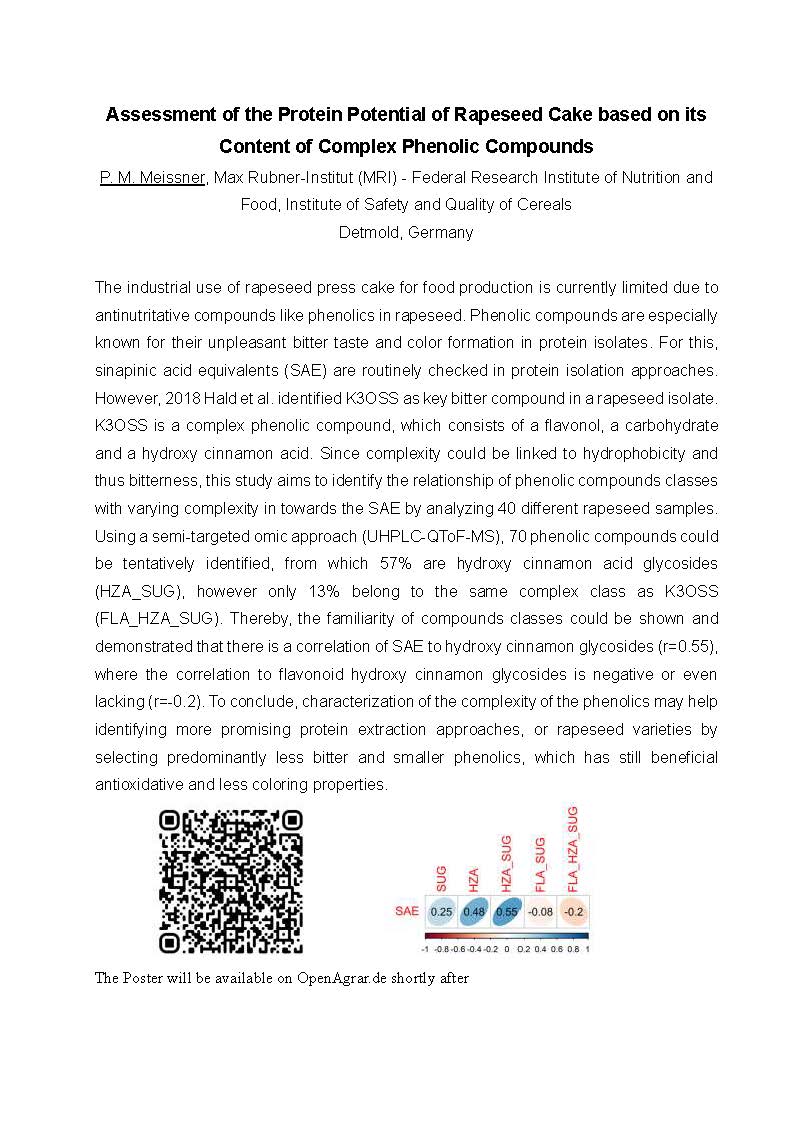The industrial use of rapeseed press cake for food production is currently limited due to antinutritative compounds like phenolics in rapeseed. Phenolic compounds are especially known for their unpleasant bitter taste and color formation in protein isolates. For this, sinapinic acid equivalents (SAE) are routinely checked in protein isolation approaches. However, 2018 Hald et al. identified K3OSS as key bitter compound in a rapeseed isolate. K3OSS is a complex phenolic compound, which consists of a flavonol, a carbohydrate and a hydroxy cinnamon acid. Since complexity could be linked to hydrophobicity and thus bitterness, this study aims to identify the relationship of phenolic compounds classes with varying complexity in towards the SAE by analyzing 40 different rapeseed samples. Using a semi-targeted omic approach (UHPLC-QToF-MS), 70 phenolic compounds could be tentatively identified, from which 57% are hydroxy cinnamon acid glycosides (HZA_SUG), however only 13% belong to the same complex class as K3OSS (FLA_HZA_SUG). Thereby, the familiarity of compounds classes could be shown and demonstrated that there is a correlation of SAE to hydroxy cinnamon glycosides (r=0.55), where the correlation to flavonoid hydroxy cinnamon glycosides is negative or even lacking (r=-0.2). To conclude, characterization of the complexity of the phenolics may help identifying more promising protein extraction approaches, or rapeseed varieties by selecting predominantly less bitter and smaller phenolics, which has still beneficial antioxidative and less coloring properties.
The Poster will be available on OpenAgrar.de shortly after.
